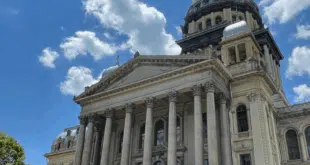It may well be the mobile-payments app provider you never heard of, but Paydiant Inc. is winning deals with major banks, processors, and merchants, and on Tuesday it secured $15 million in a Series C round of funding. The financing brings to almost $35 million the cash injections the Wellesley, Mass.-based company has piled up since its launch three years ago.
Tuesday’s vote of confidence included investments from two unnamed Paydiant clients, one of them a Fortune 500 company. Other investors include venture-capital firms North Bridge Venture Partners, General Catalyst Partners, and Stage 1 Ventures.
The new funding comes as mobile-payments technology vendors struggle to differentiate themselves and find adoption with consumers and merchants. In particular, companies like Google Inc. and the carrier-controlled Isis venture, which have relied on near-field communication technology to trigger transactions, have run into fierce headwinds. Google has scaled back its Google Wallet product and is now focusing on online usage. Isis has announced a nationwide rollout for later this year, but experienced spotty consumer usage with small merchants in its two test cities, Austin, Texas, and Salt Lake City.
In the meantime, mobile wallets continue to proliferate, with well more than 100 in the marketplace, making it hard to for any vendor establish a brand and win adoption with skeptical merchants.
Against this backdrop, Paydiant has secured about a dozen clients for its app, which relies on quick-response codes at the point of sale rather than NFC. These include processors Fidelity National Information Services (FIS) and Vantiv Inc., banks Bank of America Corp., Capital One Financial Services Corp., and Barclaycard, and merchants, the largest of which is the mid-Atlantic grocery chain Harris Teeter Inc., which is using the app in a pilot to allow customers to pay for groceries in a curbside pickup lane.
One intriguing possibility is Isis, which was seen manning a booth next to one belonging to Paydiant at a recent meeting of franchisees of Subway, the national sandwich chain. Chris Gardner, a Paydiant co-founder, won’t comment on any potential Isis connection. “We’re spending time with lots of folks,” he tells Digital Transactions News. A spokesman for Isis, which is jointly owned by AT&T Mobility, T-Mobile USA, and Verizon Wireless, did not respond with comment.
While Paydiant will not disclose how many consumers are using its app, Gardner admits it’s “not a big enough number for us to brag about.” But the company’s real customer is its client, not the consumer. It sells its app to merchants, banks, and processors and lets them run and brand it as they like in an arrangement known as white-labeling.
Clients pay what Gardner calls a “small transaction fee” and a per-user fee, though Paydiant enters revenue-sharing agreements with companies that use its offers-management platform to generate incremental revenue. In some cases, this share can be substantial enough to replace the fees, Gardner says. A complementary loyalty platform is set to debut next month.
Ultimately, the advantage in this arrangement is that companies retain ownership and control of their customer data, says Gardner. That appeals to merchants and banks that fear turning over data, a reluctance that proved to be a major hurdle for Google Wallet, for example. By staying in the background, Paydiant remains unknown relative to better-known mobile offerings but is slowly establishing itself as a switch for mobile transactions. “Everybody has Visa envy,” quips Gardner. “They want to be the new brand, the new sticker on the door.”
Arkady Fridman, a former PayPal Inc. executive who follows emerging payments as a senior analyst at Boston-based Aite Group LLC, says Paydiant’s strategy hands it two key advantages: it means clients don’t see the company as a threat to capture customer data, and it eliminates the need to spend huge sums building a consumer brand. “Ultimately, they are not responsible for building their own consumer base,” he notes, though he adds the downside of this advantage is that Paydiant remains at the mercy of its clients to build consumer adoption.
While some experts have questioned the security of QR codes, especially at the point of sale, Gardner says Paydiant’s wallet doesn’t store any payment credentials. Instead, users log in on the app, select their payment method, and scan a one-time transaction ID displayed at the point of sale. The actual card data “never gets anywhere near the transaction or the user,” Gardner says.
Paydiant is expanding to ATMs, as well, through a deal with ATM maker Diebold Inc. In this arrangement, a user can log into the app to set up a cash withdrawal. Later, at the ATM, he scans a QR code displayed on the ATM screen to complete the transaction. Chicago-based banking company Wintrust Financial Corp. is the first financial institution to deploy the technology.
The wallet market may be crowded, but no other entry has an approach that is like Paydiant’s, says Fridman, a position that may have played a role in the company’s ability to attract investors. “I’m very optimistic about what Paydiant is doing,” Fridman says. “This funding round is a testament to their unique position in the market.”





